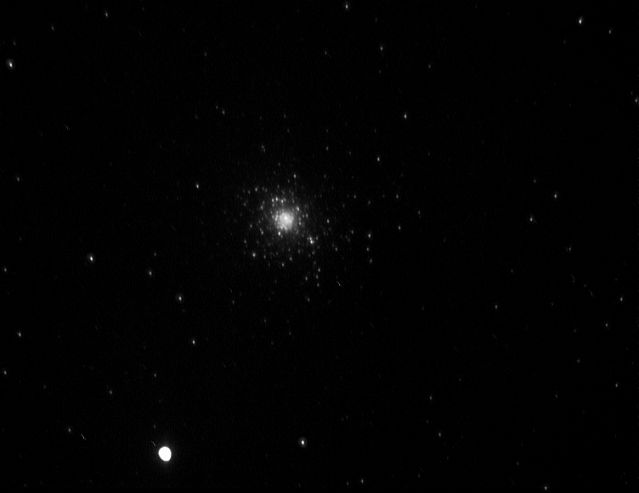

M5 was first observed by Gottfried and Maria Kirch, who described it as a nebulous star on 5th May 1702. Charles Messier observed it on 23rd May 1764 and described it as a round nebula but he could not resolve it into stars. In 1791 William Herschel saw some 200 stars but remarked that the centre was so compressed that it was impossible to distinguish its components.
M5 is 24,500 light-years away and is one of the larger of the globular clusters being around 15 light-years in diameter but its central core is only about 6 light-years in diameter. It has been estimated to contain between 100,000 and 500,000 stars and half of them are contained in a volume of about 85 cubic light-years - a very high density of stars. The cluster is believed to be about 13,000 million years old. It contains at least 105 variable stars.
 |
This is my first attempt at this cluster. It is very compact and has a very bright core. This picture is a composite of two pictures that differ only in processing. The original exposures were aligned and stacked and the histogram stretched to enhance the cluster, which was almost invisible. The original pictures were then enhanced with the non-linear stretch tool in star-mx7 software. This enhanced the fainter stars but saturated the majority of the core. These two pictures were then stacked in RegiStax and a small wavelet enhancement produced the final picture. The over-exposed star at the bottom of the image is 5-Serpentis whose magnitude is 5.0 Date and Time: 17th April 2010 00:35 - 00:44 UT Camera: MX716 Telescope: ST80 with skyglow and IR-block filters Capture: star_mx7. Exposure 40 sec, 10 frames Processing: RegiStax5. 9 frames stacked, wavelet 1 = 5. |
||
Home Back to DSOs